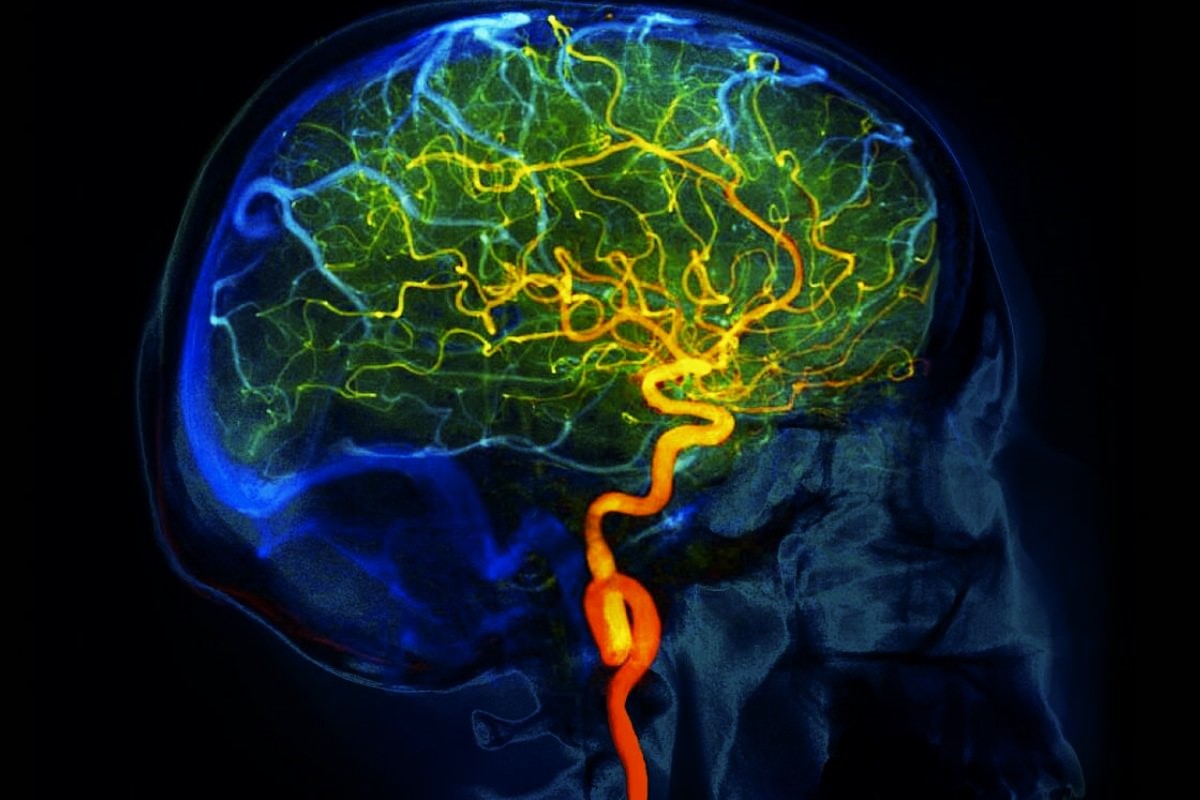
Reversible Cerebral Vasoconstriction Syndrome (RCVS) is a rare but serious condition that affects the blood vessels in the brain, causing them to constrict and then relax. This can lead to severe headaches, often described as "thunderclap" headaches due to their sudden and intense nature. RCVS can also cause other neurological symptoms like seizures, vision changes, and even strokes. While the exact cause remains unknown, it’s often linked to certain medications, drugs, or postpartum changes. Understanding RCVS is crucial because early diagnosis and treatment can prevent complications. Here are 50 facts to help you grasp the essentials of this intriguing syndrome.
Key Takeaways:
- Reversible Cerebral Vasoconstriction Syndrome (RCVS) causes sudden, severe headaches and affects people of all ages. Early diagnosis and treatment are crucial for managing this rare but serious condition effectively.
- Managing RCVS involves medical treatment, lifestyle adjustments, and finding support. Keeping a headache diary, managing stress, and staying hydrated can help improve quality of life for those living with RCVS.
What is Reversible Cerebral Vasoconstriction Syndrome?
Reversible Cerebral Vasoconstriction Syndrome (RCVS) is a rare but serious condition involving the narrowing of blood vessels in the brain. This can lead to severe headaches and other neurological symptoms. Understanding RCVS can help in recognizing and managing this condition effectively.
- RCVS is characterized by sudden, severe headaches often described as "thunderclap headaches."
- The condition is called "reversible" because the blood vessel narrowing typically resolves within three months.
- RCVS can affect people of any age but is most commonly seen in middle-aged women.
- Triggers for RCVS include physical exertion, emotional stress, and certain medications.
- The exact cause of RCVS remains unknown, making it a challenging condition to predict and prevent.
Symptoms of RCVS
Recognizing the symptoms of RCVS is crucial for timely diagnosis and treatment. Here are some common signs to watch for.
- Thunderclap headaches are the most prominent symptom, often peaking within 60 seconds.
- Some patients experience nausea and vomiting during headache episodes.
- Visual disturbances, such as blurred vision or temporary blindness, can occur.
- Seizures are reported in some cases, adding to the urgency of medical evaluation.
- Weakness or numbness on one side of the body may indicate a more severe episode.
Diagnosis of RCVS
Diagnosing RCVS involves a combination of clinical evaluation and imaging studies. Early diagnosis can prevent complications.
- Magnetic Resonance Imaging (MRI) is commonly used to detect changes in brain blood vessels.
- Magnetic Resonance Angiography (MRA) helps visualize the narrowing of cerebral arteries.
- A lumbar puncture may be performed to rule out other conditions like meningitis.
- Blood tests can help identify potential triggers or underlying conditions.
- A detailed patient history, including recent activities and medication use, is essential for diagnosis.
Treatment Options for RCVS
While there is no specific cure for RCVS, various treatments can help manage symptoms and prevent complications.
- Calcium channel blockers are often prescribed to help relax blood vessels.
- Pain management is crucial, with medications like acetaminophen or NSAIDs commonly used.
- Avoiding known triggers, such as certain medications or strenuous activities, is recommended.
- In severe cases, corticosteroids may be used to reduce inflammation.
- Regular follow-up with a neurologist is important to monitor progress and adjust treatment as needed.
Potential Complications of RCVS
Although RCVS is generally reversible, it can lead to serious complications if not managed properly.
- Stroke is a significant risk, especially if blood vessel narrowing is severe.
- Brain hemorrhage can occur, leading to potentially life-threatening situations.
- Persistent neurological deficits, such as weakness or speech difficulties, may develop.
- Recurrent headaches can affect the quality of life and daily functioning.
- Psychological impacts, including anxiety and depression, are common in patients with chronic conditions.
Research and Future Directions
Ongoing research aims to better understand RCVS and improve treatment options. Here are some areas of focus.
- Studies are exploring the genetic factors that may predispose individuals to RCVS.
- New imaging techniques are being developed to detect blood vessel changes earlier.
- Researchers are investigating the role of inflammation in the development of RCVS.
- Clinical trials are testing new medications that could offer more effective symptom relief.
- Patient registries are being established to collect data and improve understanding of RCVS.
Living with RCVS
Managing life with RCVS involves a combination of medical treatment and lifestyle adjustments. Here are some tips for coping.
- Keeping a headache diary can help identify triggers and track symptom patterns.
- Stress management techniques, such as meditation or yoga, can be beneficial.
- Staying hydrated and maintaining a healthy diet supports overall brain health.
- Regular exercise, within safe limits, can improve vascular health and reduce stress.
- Joining a support group can provide emotional support and practical advice from others with RCVS.
Myths and Misconceptions about RCVS
There are several myths and misconceptions about RCVS that can lead to confusion. Here are some common ones debunked.
- RCVS is not always caused by stress, although stress can be a trigger.
- It is not a life sentence; many people recover fully with proper treatment.
- RCVS is not the same as a migraine, although the headaches can be similar.
- It is not contagious and cannot be spread from person to person.
- RCVS does not only affect women; men can also develop the condition.
Support and Resources for RCVS Patients
Finding support and resources can make a significant difference in managing RCVS. Here are some helpful options.
- The American Stroke Association offers resources and support for those affected by RCVS.
- Online forums and social media groups provide a platform for sharing experiences and advice.
- Neurology clinics often have support services and educational materials for patients.
- Mental health professionals can help address the psychological impacts of living with RCVS.
- Patient advocacy organizations work to raise awareness and support research efforts.
Interesting Facts about RCVS
Here are some intriguing facts about RCVS that highlight the complexity and uniqueness of this condition.
- RCVS was first described in medical literature in the 1980s.
- The condition is sometimes referred to as "Call-Fleming syndrome" after the doctors who first identified it.
- RCVS can occur in conjunction with other conditions, such as postpartum angiopathy.
- Some cases of RCVS have been linked to the use of recreational drugs like cocaine.
- Despite its severity, many people with RCVS go on to lead healthy, normal lives after recovery.
Final Thoughts on Reversible Cerebral Vasoconstriction Syndrome
Reversible Cerebral Vasoconstriction Syndrome (RCVS) is a complex condition that can be both alarming and confusing. Understanding its symptoms, causes, and treatments can make a significant difference in managing it effectively. Key symptoms include sudden, severe headaches often described as "thunderclap" headaches. Triggers range from certain medications to stress and even physical exertion. While the condition is typically self-limiting, meaning it resolves on its own, medical intervention can help manage symptoms and prevent complications.
Early diagnosis and treatment are crucial. If you or someone you know experiences sudden, intense headaches, seeking medical advice promptly is essential. Awareness and education about RCVS can lead to better outcomes and less anxiety for those affected. Stay informed, consult healthcare professionals, and don't ignore severe headache symptoms. Knowledge is power when it comes to managing health conditions like RCVS.
Frequently Asked Questions
Was this page helpful?
Our commitment to delivering trustworthy and engaging content is at the heart of what we do. Each fact on our site is contributed by real users like you, bringing a wealth of diverse insights and information. To ensure the highest standards of accuracy and reliability, our dedicated editors meticulously review each submission. This process guarantees that the facts we share are not only fascinating but also credible. Trust in our commitment to quality and authenticity as you explore and learn with us.


